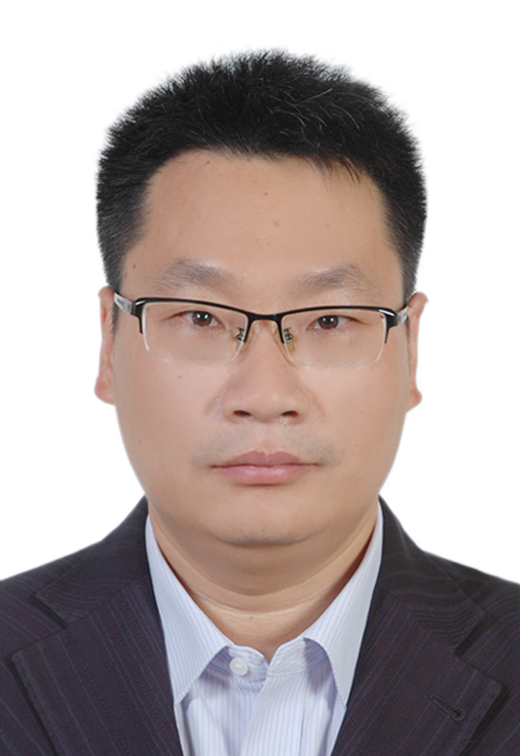报告时间:2017年5月2日上午9:00
报告地点:科技创新大楼C501室
报告题目:Atomically Engineered Materials for Hydrogen Evolution Reaction
Atomically Engineered Materials for Hydrogen Evolution Reaction
Prof. Hua Gui Yang*
Key Laboratory for Ultrafine Materials of Ministry of Education, School of Materials Science and Engineering, East China University of Science and Technology, Shanghai, 200237, China
*E-mail:hgyang@ecust.edu.cn
Keywords: Solar Energy, Hydrogen, Photocatalyst, Atomic Engineering, DFT.
Abstract:The growing energy crisis and environmental issues are driving the development of clean and sustainable energy sources. In particular, solar energy as one of the best sources of renewable energy has attracted significant attention as a promising way to solve these problems. Herein, we studied various atomically engineered catalytic materials to enhance the solar-driven water splitting. First of all, using polymer ligands to control the size and valence state of platinum monoxide clusters, we found that Pt in a higher oxidation has remarkable hydrogen oxidation reaction suppression ability, while its H2 evolution capacity is still comparable to that of the benchmark of conventional Pt cocatalyst.[1] Moreover, we explored the active sites of Pt/TiO2 photocatalyst on atomic level by a collaborative analysis from both experimental and theoretical work; metallic Pt0 nanoparticles have little contribution to the activity of solar water splitting and by contrast, oxidized species Ptδ+ truly take the role of the catalytic active sites.[2] In addition, we designed and synthesized a surface H-bonding network decorated g-C3N4 photocatalyst with high efficiency of visible-light-driven H2 production. According to NMR and theoretical modeling, the H-bonding bridge can effectively shorten the distance between water molecules and g-C3N4, provide multiple channels for the transition between protons and the excited electrons on g-C3N4, stabilize the anionic intermediate and transition states, and restrain charge recombination.[3] Furthermore, we anchored isolated Pt atoms on TiO2 and this photocatalyst exhibits a high solar-driven hydrogen evolution performance compared with Pt nanoparticles or clusters. The configurations of the isolated Pt atoms and their catalytic hydrogen evolution activity were calculated by large-scale periodic DFT analysis.[4] Additionally, we found that the photoreactivity of hydrogen generation can be correlated with the cluster size of the oxidized platinum cocatalyst as function, and the maximum turnover frequency is found on the smallest-sized cocatalyst.[5] These results would open a door for rethinking of the detailed principles of photocatalysis, and may also stimulate novel ideas for the design and optimization of heterogeneous photocatalysts.
References:
[1] Y. H. Li, J. X., Z. J. Chen, Z. Li, F. Tian, L. R. Zheng, H. F. Wang*, P. Hu, H. J. Zhao, H. G. Yang*, Nature Commun., 2013, 4, 2500.
[2] J. Xing, H. B. Jiang, J. F. Chen, Y. H. Li, L. Wu, S. Yang, L. R. Zheng, H. F. Wang*, P. Hu, H. J. Zhao, H. G. Yang*, J. Mater. Chem. A, 2013, 1, 15258. (Cover story)
[3] X. L. Wang, W. Q. Fang, H. F. Wang, H. Zhang, H. Zhao, Y. Yao*, H. G. Yang*, J. Mater. Chem. A, 2013, 1, 14089. (Cover story)
[4] J. Xing, J. F. Chen, Y. H. Li, W. T. Yuan, Y. Zhou, L. R. Zheng, H. F. Wang*, Y. Wang, H. J. Zhao, Y. Wang, H. G. Yang*, Chem. Eur. J., 2014, 20, 2138. (Cover story)
[5] Y. H. Li, J. X., X. H. Yang, H. G. Yang*, Chem. Eur. J., 2014, 20, 12377.
Biography
Huagui Yang received his Bachelor degree from Qingdao University in 1996 and completed his Ph.D. in 2005 at the National University of Singapore. He then joined the General Electric (GE) Company as a Research Scientist and moved to the University of Queensland (UQ) in 2007 as a Postdoctoral Research Fellow. He has been appointed as full professor of East China University of Science and Technology since 2008. His research interests focus on metallic and semiconducting functional materials for the renewable clean energy and environmental protection applications. To date, he has published more than 100 refereed papers on internationally renowned journals (e.g. Nature, Nature Energy, Nat. Commun., J. Am. Chem. Soc., Angew. Chem. Int. Ed., etc.). Meanwhile, he has been invited to contribute Feature Articles, Perspectives, Focus Reviews and Research news etc. during the past few years on international top journals.

